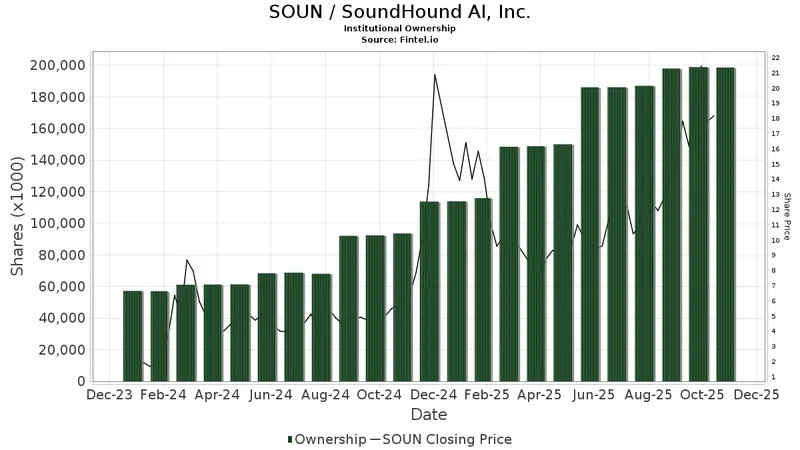Article Directory
Alright, let's dissect this SoundHound AI (SOUN) situation. The headlines are screaming about a 68% revenue jump in Q3. But anyone who's been around the block knows to look past the surface. Revenue growth is sexy, but profitability is the long game. And that's where things get… complicated.
The Headline vs. The Fine Print
SoundHound's Q3 revenue hit $42 million, a substantial leap from the previous year. They're touting enterprise AI demand across automotive, healthcare, finance, and retail as the rocket fuel. Okay, fair enough. Voice-enabled AI is definitely having a moment. The non-GAAP gross margin is hovering around 59%, which isn't bad. But then you slam into the GAAP numbers. Gross margin dips to 42.6%, and the net loss balloons to a staggering $109.3 million.
Now, before the bulls start charging, let's be clear: a big chunk of that loss—$66 million, to be exact—is attributed to "acquisition-related liabilities revalued against its rising stock price" (that parenthetical clarification is crucial, folks). It's a non-cash charge, meaning it doesn't directly impact their cash flow. But it does impact their reported earnings, and that's what Wall Street reacts to. And react it did: the stock dropped 9.5% despite the revenue surge.
I’ve looked at hundreds of these filings, and this particular footnote regarding acquisition liabilities is not unusual, but the magnitude of the impact is. It raises a key question: how much of SoundHound's "growth" is organic versus fueled by acquisitions that create these kinds of accounting distortions?
The Cash Cushion vs. The Burning Platform
Here's where the narrative gets even more interesting. SoundHound is sitting on a pile of cash—$269 million, with no debt. That's a solid war chest for future expansion. Management is waving this around like a shield, trying to deflect the negativity surrounding the GAAP loss. And I get it. They need to project confidence.

But let's not ignore the elephant in the room: even with that cash cushion, they're still burning money. The adjusted EBITDA loss narrowed slightly to $14.5 million, but it's still a loss. They can't run at a loss forever, regardless of how much cash they have on hand. At some point, they need to demonstrate a clear path to profitability, not just revenue growth.
SoundHound is expanding its AI footprint, securing deals with carmakers, restaurants, and consumer brands. They're also pushing into new sectors like healthcare and insurance. All of this sounds great on paper. But are these deals generating sustainable, profitable revenue, or are they just vanity metrics designed to impress investors?
And this is the part of the report that I find genuinely puzzling: They cite "rising enterprise AI use and large-scale deployments" as key revenue drivers. But how large-scale are these deployments, really? And what's the actual ROI for these enterprises? SoundHound isn't exactly forthcoming with those details.
Momentum vs. Reality
Benzinga Edge gives SoundHound a "very high Momentum score of 95.20." But momentum is a fickle mistress. It can evaporate in an instant if the underlying fundamentals don't support the hype. And in SoundHound's case, the underlying fundamentals are… ambiguous, to put it mildly.
The company is clearly making strides in terms of revenue growth and market penetration. But the GAAP losses, driven by these acquisition-related accounting quirks, are a red flag. They obscure the true picture of the company's financial health. And until SoundHound can demonstrate a clear path to GAAP profitability, the stock is likely to remain volatile. SoundHound AI (SOUN) Stock: Plunges 9.5% Despite Strong Q3 Revenue Surge and Expanding AI Footprint
Smoke and Mirrors?
SoundHound is selling a vision of AI dominance, but the numbers suggest a more nuanced reality. The revenue growth is undeniable, but the accounting losses are hard to ignore. Is it a genuine growth engine, or just a carefully constructed mirage? Time will tell, but for now, I'm remaining cautiously skeptical.
